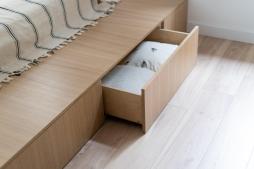How to Choose the Perfect Color Palette for Your Garden

Creating a color-coordinated garden can transform your outdoor space into a stunning visual retreat. By selecting the right color palette, you can highlight your garden’s natural beauty and create harmony among plants, flowers, and accessories. This guide will walk you through how to choose the perfect colors to bring your dream garden to life.
Understand Color Theory Basics
Before diving into plant selection, it’s important to grasp some basic color theory. Colors are categorized as warm (reds, oranges, yellows) or cool (blues, greens, purples). Complementary colors sit opposite each other on the color wheel and create vibrant contrast when paired together. Analogous colors are adjacent on the wheel and provide a more harmonious look. Knowing these relationships helps you plan a cohesive garden palette.
Assess Your Garden’s Lighting Conditions
Light plays a crucial role in how colors appear in your garden. Bright sunlight intensifies colors while shade softens them. For sunny areas, bold and vibrant hues like reds and yellows stand out beautifully. In shadier spots, cooler tones such as blues and purples tend to thrive visually. Consider where different parts of your garden receive light throughout the day before finalizing your palette.
Choose a Focal Color
Selecting one main focal color provides unity across your garden design. This could be based on your personal preference or what naturally grows well in your climate zone. Once chosen, use this focal color as an anchor throughout with flowers or foliage that feature this shade prominently.
Incorporate Supporting Colors for Depth
After picking the primary hue, add supporting colors that complement or contrast effectively. For instance, pairing soft pinks with deep greens creates depth without overwhelming senses while bright yellow combined with purple offers eye-catching contrast. Using three to four distinct but harmonious colors typically works best for balance.
Use Accessories To Enhance Your Palette
Don’t forget about non-plant elements like pots, furniture cushions, trellises or garden ornaments which can reinforce or accentuate your chosen palette further enhancing overall appeal of space without overcrowding it visually.
By understanding color theory basics and considering light conditions along with thoughtful plant selection and accessories choices,you’ll be well-equipped to create an inviting,color-coordinated garden that delights all who visit.
This text was generated using a large language model, and select text has been reviewed and moderated for purposes such as readability.


